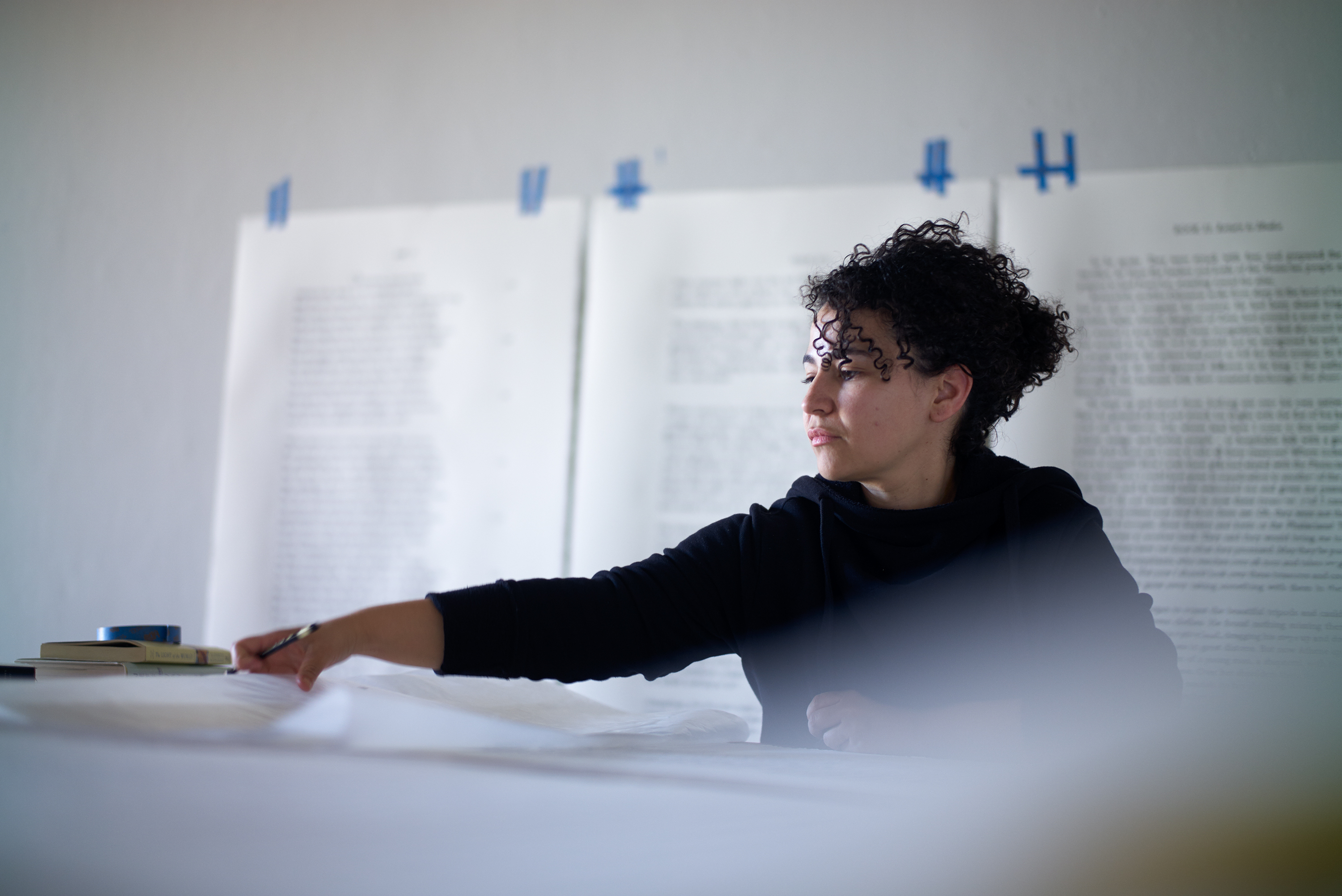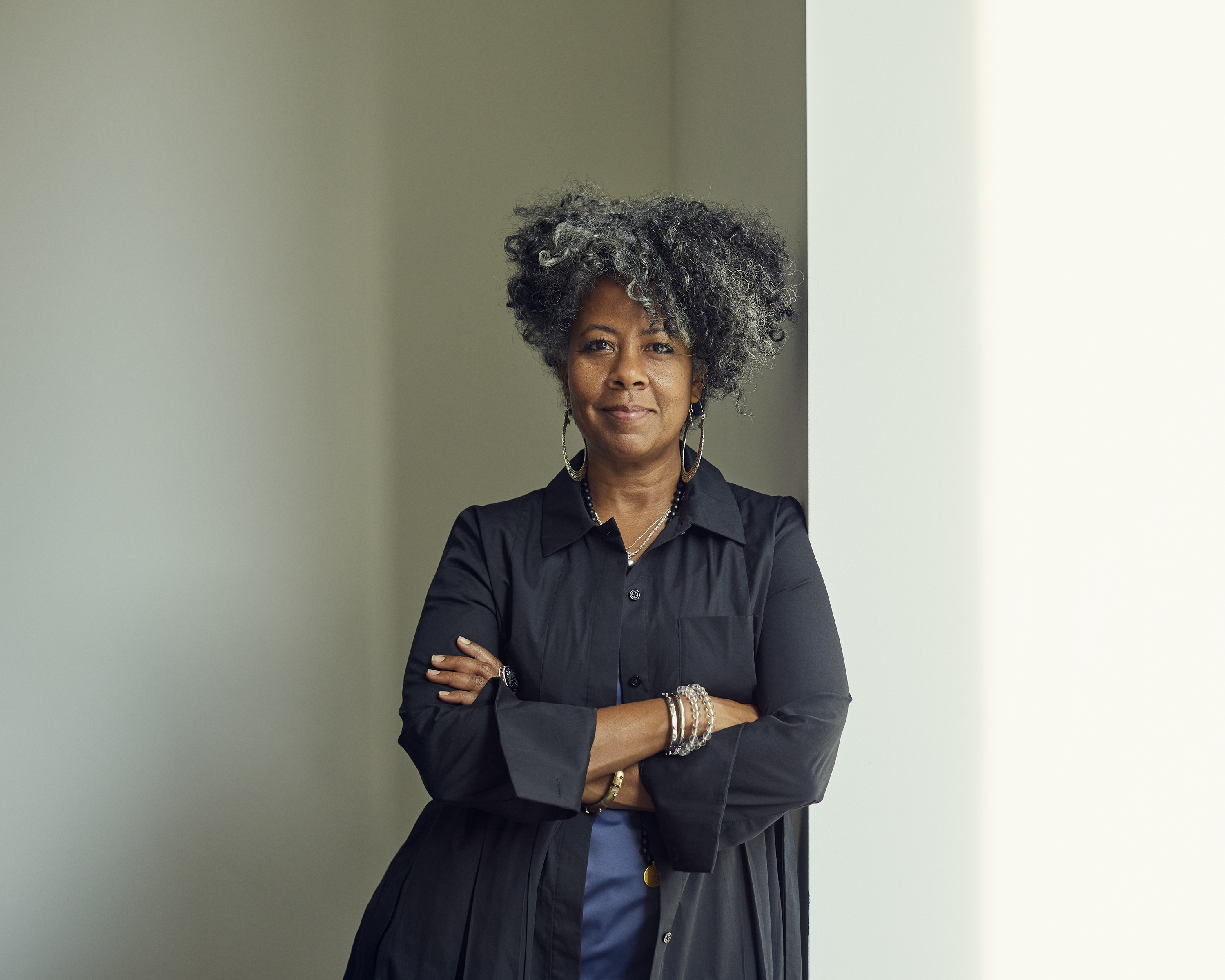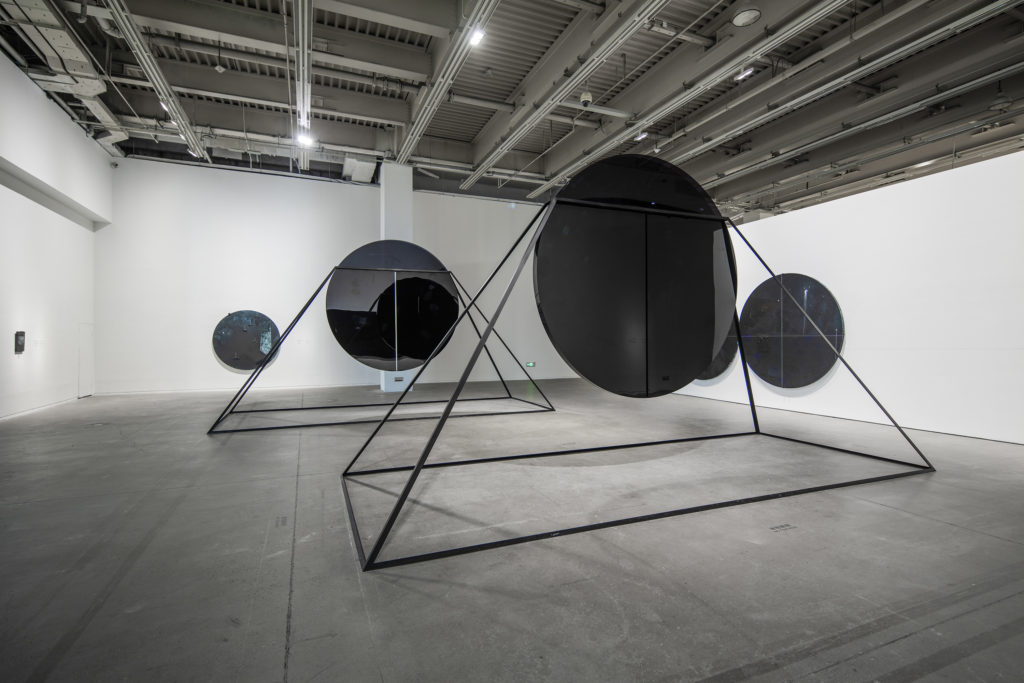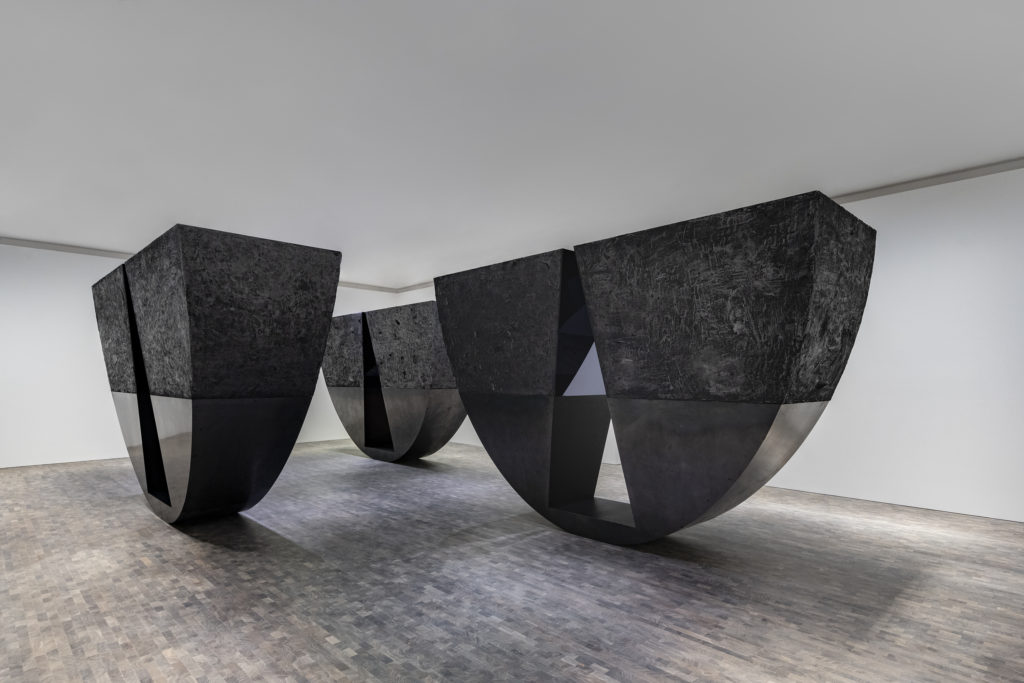In the fall of 2021, Davidson College released a Call For Qualifications for the creation of a commemorative work of art to honor the contributions of enslaved people and others whose labor was exploited. The call was open to professional artists, architects, landscape architects, and design teams with experience managing, designing, and completing public art commissions.
The jury identified the most highly qualified artist(s)/architects/teams for this opportunity, and selected five finalists, including Bethany Collins & Torkwase Dyson.


“From the intersection of language and geography, we will approach this project with the ethics of what Rinaldo Walcott refers to as the “Long Emancipation” and consider the memorial as an active site of ongoing development for strategies of freedom. Thinking about emancipation as an ongoing project, we are interested in designing an interactive space that can change and adapt to new information. Along with language and geography, we are also both interested in experimenting with ideas of interactivity, architecture and ephemerality in relation to archives and embodied ways of knowing. Our goal with this collaboration is to create elastic, multi-sensory experiences capable of physical and digital direct interaction over time.”
Bethany Collins is a multidisciplinary artist whose conceptually driven work is fueled by a critical exploration of how race and language interact. Language is both her subject and primary material—from dictionaries and encyclopedias to literary journals and newspaper archives. Language is also a prism through which she explores American history and the nuance of racial and national identities. Born in 1984 in Montgomery, AL, Collins received her BA in Studio Art and Photojournalism from the University of Alabama in 2007, and her MFA from Georgia State University in 2012. She was the 2013-2014 Artist-in-Residence at the Studio Museum in Harlem, and 2019 Public Humanities Practitioner-in-Residence at Davidson College in Davidson, North Carolina. Collins was awarded the Hudgens Prize in 2015 and Efroymson Contemporary Arts Fellowship in 2018. Upcoming and recent solo museum exhibitions include presentations at the Frist Museum, Montgomery Museum of Fine Arts, CAM St. Louis, The University of Kentucky Art Museum, and the Art Institute of Chicago.
Torkwase Dyson is a painter working across multiple mediums to explore the continuity between ecology, infrastructure, and architecture. Examining environmental racism and the history and future of Black spatial liberation strategies, Dyson’s abstract works grapple with how space is perceived and negotiated, particularly by black and brown bodies. Dyson builds the paintings slowly, accumulating washes and configuring minimal geometric elements. The paint-handling producing various visual qualities using brushwork and other tools is made poetic by juxtaposing delicate marks and scored diagrammatic lines. This compositional rigor imbues the works with an architectural presence and optical gravity that invites a direct experience with the object. In 2019, Dyson’s solo exhibition “I Can Drink the Distance” was on view at The Cooper Union, New York, and her work was also presented at the Sharjah Biennial. In addition to participating in group exhibitions at the Smithsonian National Museum of African Art, Washington, D.C.; Whitney Museum of American Art, New York; The Museum of Modern Art, New York; and California African American Museum, Los Angeles, Dyson has had solo exhibitions and installations at Colby College Museum of Art, Waterville, Maine; Graham Foundation for Advanced Studies in the Fine Arts, Chicago; Schuylkill Center for Environmental Education, Philadelphia; and Suzanne Lemberg Usdan Gallery, Bennington College, Vermont.
Join the conversation with Collins & Dyson during their Zoom Community Engagement session on October 25 from 7-8:00 p.m. RSVP here.
Dyson and Collins will share their approach to black geography, art production and place as social infrastructure. We would like to invite community constituents to share their past/current use of campus spaces, as well as their desired outcome for the public art in the service of memory and reconciliation.



Top left: Torkwase Dyson, Bird and Lava #01 (Bird and Lava), 2021, Acrylic, plywood, steel, 11′ × 20′ × 20′ each. 13th Shanghai Biennale/The Power Station of Art, Photography by Jiang Wenyi; Top right: Torkwase Dyson: Liquid a Place, 2021, Steel, patinated brass and graphite,8′ × 12′ × 48″ each, Pace Gallery, London, Photography by Damian Griffiths; Bottom: Bethany Collins, Where the lash is made red in the blood of the lave (The Chase), 2021, Charcoal and acrylic on panel, 48” x 72” x 2”, 2021. Photography by Evan Jenkin
To learn about the other finalists, click their names below:
Radcliffe Bailey
Hood Design
Hank Willis Thomas & Perkins&Will
Studio Zewde

